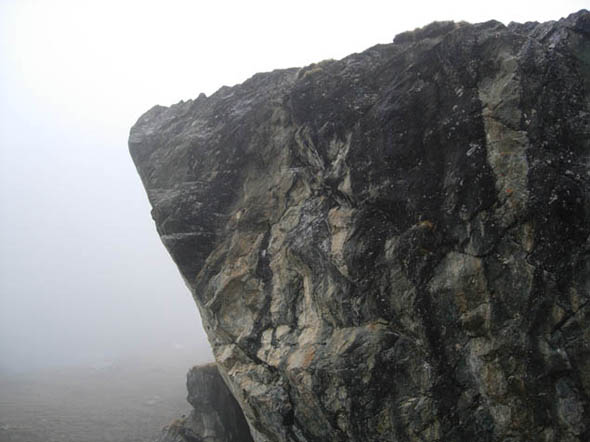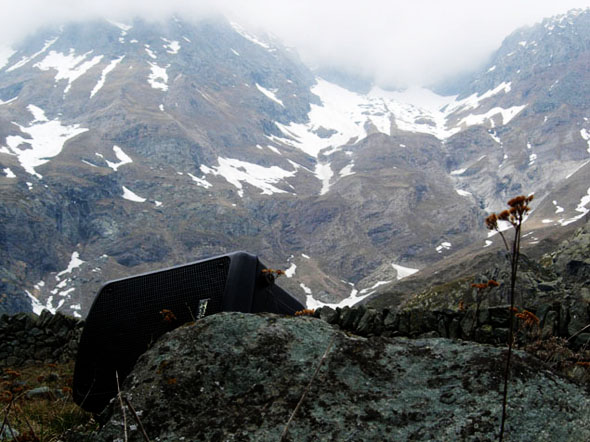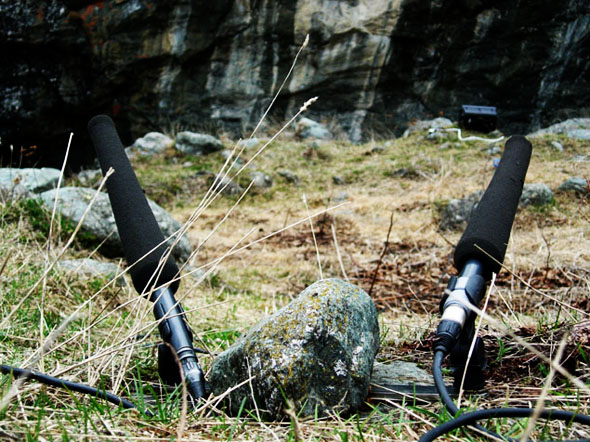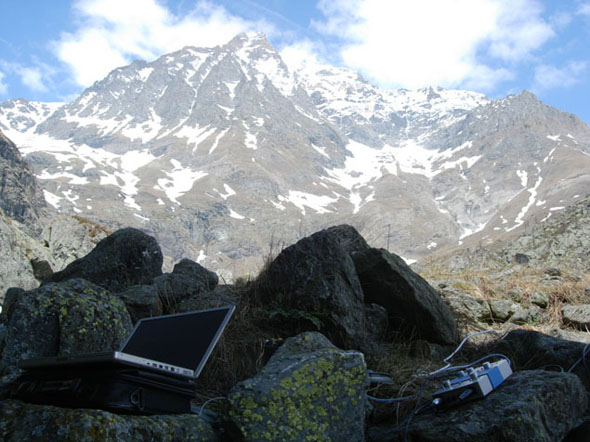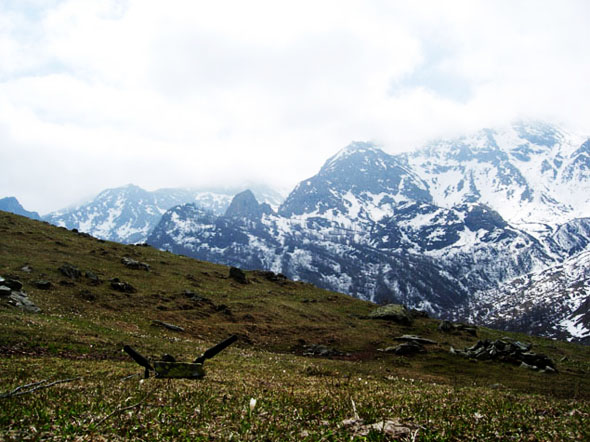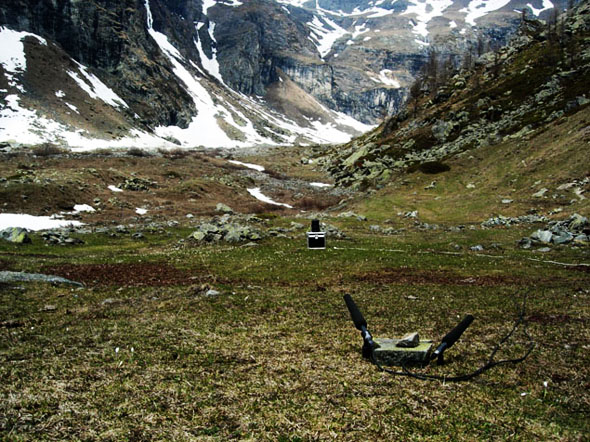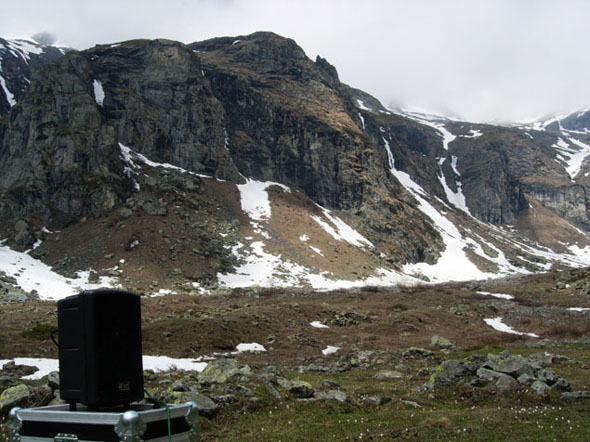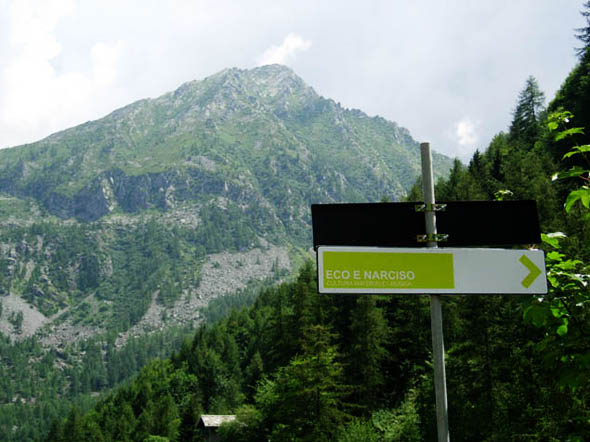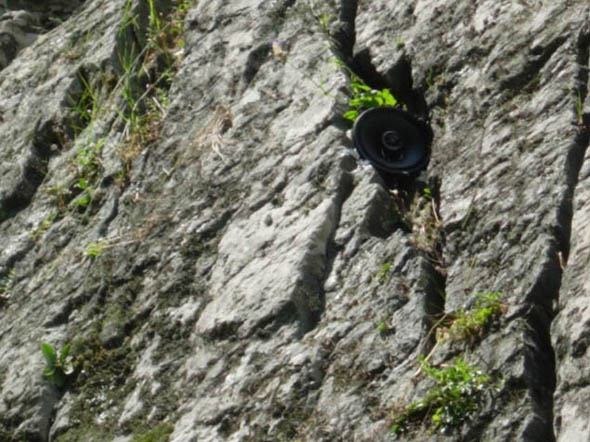R A V I N E
Site specific installation & CD. Comissioned by Daniela Cascella. Eco e Narciso, Provincia di Turino, Italy © 2006
According to Ovid (in The Metamorphoses), Echo “lives in the woods…
and it is sound, that lives in herself”. At the same time, the nymph
Echo vanishes into sound and is transformed into a rock, so she keeps
within herself the double-folded essence of concrete stone and elusive
audio presence.
It is literally in the quest for Echo, in the village of the rocks, that
Jacob Kirkegaard embarked in his intervention, which was aimed straight
to the heart of the myth. “I will be looking for Echo”, was
Kirkegaard’s focus on arriving in Balme, the village of alpine guides
which lies right underneath an imposing wall of rock, and whose sublime
landscapes are part of the local museum’s heritage. Daniela
Cascella
For the intervention Kirkegaard chose a valley and a huge rock, both producing
echo. A loudspeaker was placed six meters from the rock turning against
it. Further away from the rock a microphone recorded the space in front
of the rock. This recording was then played back -up against the rock-
and the rock 'echoed' it back into the microphone. This recording was
then played back against the rock which echoed it back again and again.
Layering the echoes of a rock Jacob Kirkegaard evoked a sonic room in
an outer space, singing drones bouncing from the rock
ECO E NARCISO According to Ovid (in The Metamorphoses), Echo “lives in the woods… and it is sound, that lives in herself”. At the same time, the nymph Echo vanishes into sound and is transformed into a rock, so she keeps within herself the double-folded essence of concrete stone and elusive audio presence It is literally in the quest for Echo, in the village of the rocks, that Jacob Kirkegaard embarked in his intervention, which was aimed straight to the heart of the myth. “I will be looking for Echo”, was Kirkegaard’s focus on arriving in Balme, the village of alpine guides which lies right underneath an imposing wall of rock, and whose sublime landscapes are part of the local museum’s heritage. Kirkegaard’s research, which ideally continues the one he began last year in the deserted spaces of Chernobyl, aims at finding – or we’d better say revealing – the aural quality of spaces which are apparently devoid of any particular sound hues. In each one of these spaces, he carries on an acoustic recording of some minutes, that is played and recorded again in the same space, over and over, to excite the appearance of overtones and the place’s hidden sounds As compared to Alvin Lucier’s renowned piece I Am Sitting In A Room (1969), in which a similar operation was carried out starting off the composer’s own voice reading his own written words, Kirkegaard begins from an opposite point of view, getting rid of the presence of any human utterances and leaving the spaces to speak for themselves. By doing so he catches concealed movements and vibrations; he gives back to those ‘empty’ spaces the sense of a dimension which is totally and perversely human, because it narrates off-handed shadows, and resonates with the ghosts and the hidden sides of the thoughts and feelings of anyone who relates to those sounds. With a great sense of challenge and with precious bravery, Kirkegaard has thus faced the open spaces of the mountains in Balme: here in fact there were no closed rooms, but the entire, majestic Alpine landscape, its open spaces and its rocks. It is therefore with full and rewarding bewilderment that, on listening to the outcome of the very early recording sessions, we found that those places actually had begun to sing: Kirkegaard did succeed in his first intuition and vision - he did find the voice of Echo between the clefts and the valleys By Daniela Cascella, Curator of the Eco e Narciso project |
